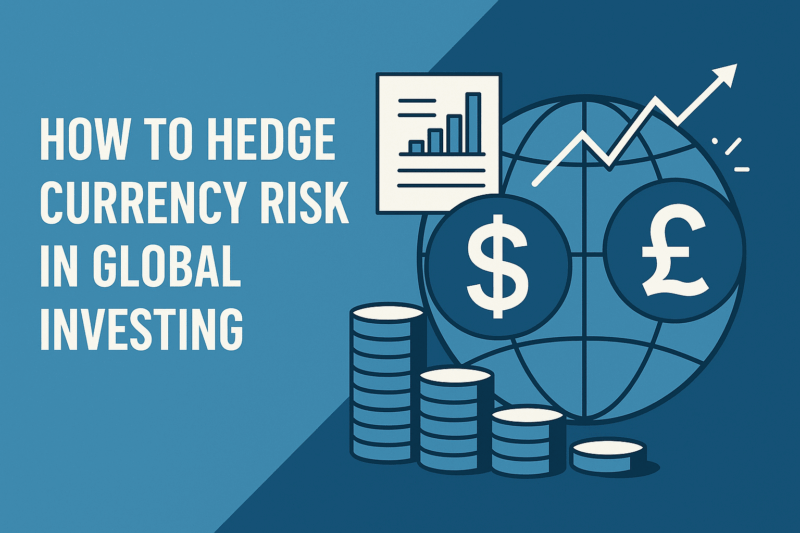 Over the past few years, I’ve used options as a way to generate consistent income from stocks I own or follow closely. Like many traders, I gravitated toward weekly options. They’re fast, frequent, and seemingly efficient. Whether I was writing covered calls on MicroStrategy or selling cash-secured puts on Alphabet, the weekly premiums felt like a reliable source of cash flow.
Over the past few years, I’ve used options as a way to generate consistent income from stocks I own or follow closely. Like many traders, I gravitated toward weekly options. They’re fast, frequent, and seemingly efficient. Whether I was writing covered calls on MicroStrategy or selling cash-secured puts on Alphabet, the weekly premiums felt like a reliable source of cash flow.
But recently, I made a strategic shift: I’m moving away from weekly options and focusing on monthly full-term options instead. After diving deeper into the mechanics of option pricing, execution, and market structure, I’ve realized that monthlies offer superior performance in most real-world trading scenarios.
Here’s what changed my mind, and why you might want to reconsider your own approach if you’re still using weeklies as your default.
Weekly Options: What I Was Doing
My earlier approach centered around short-term trades. I’d sell weekly calls or puts to collect premium, targeting short-term moves in names like MicroStrategy (MSTR), Tesla, or Alphabet. The appeal was obvious:
- Faster income cycles
- High annualized returns (on paper)
- Tactical flexibility
But in practice, I noticed several recurring issues:
- Wider bid/ask spreads on anything beyond the front-week
- Low open interest and less competitive pricing
- Higher gamma risk near expiry
- Constant need to monitor, manage, and roll positions
These frictions slowly eroded returns and added more stress than necessary.
Enter the Monthly, Full-Term Option
So what is a full-term monthly option? It’s the option that expires on the third Friday of each month. These were the original standardized options listed by the Options Clearing Corporation (OCC) when listed options began trading in the 1970s.
Weekly options, on the other hand, were introduced much later (2005 by CBOE) to meet demand for more flexibility and short-term trading instruments. While they serve a purpose, they were essentially bolted on to the original system.
And it shows.
The Structural Advantage of Monthly Options
- More Premium in Real Terms
Monthly options consistently offer more time value per trade. Yes, weeklies may look more “efficient” per day on paper, but in practice, monthlies return more net premium due to better execution and tighter spreads. - Superior Liquidity and Tighter Spreads
Market makers prioritize monthly expiries. The bid/ask spreads are narrower, meaning you lose less on the buy and sell side. - Better Open Interest and Volume
Full-term options attract more traders. More liquidity = better fills and less slippage. - Simpler Management and Rolling
Weekly positions expire quickly, requiring more active management. Monthly options give you breathing room to manage positions deliberately. - Lower Gamma Risk
As weekly options approach expiration, price sensitivity (gamma) spikes. With monthlies, that curve is smoother.
If You’re Holding for a Month Anyway, Use the Monthly
This was a big insight for me: I realized that even though I was trading weekly options, I was often holding them for 2–4 weeks before rolling or closing. So why not start with the monthly to begin with?
Instead of targeting an August 30th expiry (a weekly), I now look at the August 16th full-term option. Or even better, go out to September 20th, sell the call, and manage or roll it earlier if needed.
You’re not locked in. You’re just operating on more favorable terms.
Why Weeklies Can Look Tempting: Volatility Magnifies the Premium
One of the big reasons I leaned into weekly options — especially with names like MicroStrategy (MSTR) — was the sheer volatility. When a stock regularly moves 5–10% in a week, the premiums on short-dated options get inflated fast. That meant:
- Juicy implied volatility (IV) priced into the premiums
- The ability to quickly collect income, sometimes multiple times in a month
- An opportunity to sell rich options even when far out-of-the-money
And it worked — for a while. MSTR’s wild swings made weeklies feel like an income machine. But as I looked deeper, I realized that those rich premiums came at a cost:
- Assignments became more frequent and harder to control
- Bid/ask spreads on later-dated weeklies were sloppy
- Managing positions every few days started to feel like a job
It became clear that even in high-IV environments, the structural advantages of monthly options often win out, especially when you’re trading size or managing a portfolio systematically.
Are High IV Weeklies Really That Much Better?
It’s true that weekly options often show higher implied volatility per day than monthlies. On paper, that makes them look more profitable. But here’s the reality:
| Issue | Why It Hurts Weeklies |
|---|---|
| Wider bid/ask spreads | Slippage reduces your actual collected premium |
| Thin open interest | Poor fills or difficulty closing positions |
| Gamma spikes | Rapid, unpredictable price moves near expiry |
| More frequent management | More trades = more fees + more stress |
| Assignment risk | Especially with short-dated ITM options |
So while weeklies may look more profitable in high-volatility stocks, monthlies often deliver more net premium with less friction, especially when scaled.
Who Weekly Options Are Still Good For
Despite all the advantages of monthly options, there are still specific situations—and traders—for whom weeklies make sense.
- Earnings Plays & Volatility Events: Traders who want to sell options around earnings or Fed announcements often prefer weeklies for their precision. The ability to target a specific date lets you isolate risk to that event window.
- Short-Term Directional Bets: If you’re speculating on a 1–3 day move in a stock, weeklies give you the cheapest and most gamma-sensitive exposure.
- Scalpers and Day Traders: Those managing trades by the hour or day often favor weeklies for their fast-moving nature. They’re nimble tools in the hands of professionals.
- High IV Environments: In stocks with elevated implied volatility (like MSTR), weeklies may offer juicy premiums that justify the risks—if managed closely.
- Exit Tactics: If a monthly covered call is expiring in-the-money, you may prefer to let the shares get called away and switch to puts rather than roll at a poor price. This can be a cleaner transition than forcing a roll for little premium or upside.
In short, weeklies are best for traders who are both tactically aggressive and highly active. They require more time, tighter discipline, and the ability to move quickly. They’re not inherently bad—but they’re often used inefficiently by traders who would be better off with the stability and performance of full-term options.
Final Thoughts
Weekly options are great for tactical plays, earnings speculation, or quick gamma scalps. But for consistent income, clean execution, and strategic control, monthly full-term options are superior.
This isn’t just theory. It’s a shift I’ve made in my own trading, and it’s already improved both my performance and my peace of mind.
If you’re looking for less friction, better fills, and stronger long-term returns, consider making the switch.
Monthly might not sound exciting—but it works.
 Investing across borders opens up new opportunities for yield, growth, and diversification. But with international investing comes exposure to foreign currencies—and that means currency risk.If your home currency is the euro, US dollar, or any other, and you invest in assets priced in a different currency (like the British pound, Japanese yen, or Swiss franc), shifts in exchange rates will impact your actual return. Even if the investment performs well in local terms, currency fluctuations can boost or shrink your returns once converted back.Fortunately, there are effective strategies to manage this risk. Below are three simple approaches retail investors can use—along with a deeper look into how currency-hedged ETFs actually work.
Investing across borders opens up new opportunities for yield, growth, and diversification. But with international investing comes exposure to foreign currencies—and that means currency risk.If your home currency is the euro, US dollar, or any other, and you invest in assets priced in a different currency (like the British pound, Japanese yen, or Swiss franc), shifts in exchange rates will impact your actual return. Even if the investment performs well in local terms, currency fluctuations can boost or shrink your returns once converted back.Fortunately, there are effective strategies to manage this risk. Below are three simple approaches retail investors can use—along with a deeper look into how currency-hedged ETFs actually work.
 In the global investing landscape, the UK stock market often flies under the radar. It lacks the tech-heavy glamour of the US or the hyper-growth potential of emerging markets. Yet, a recent conversation with a long-time UK-based investor made me pause.
In the global investing landscape, the UK stock market often flies under the radar. It lacks the tech-heavy glamour of the US or the hyper-growth potential of emerging markets. Yet, a recent conversation with a long-time UK-based investor made me pause. Options trading often boils down to one critical decision: should you let your position expire or close it early? This choice is relevant for both buyers and sellers of calls and puts. In this article, I’ll break down the scenarios for each type of option—long calls, short calls, long puts, and short puts—and provide practical tips for making the best decision.
Options trading often boils down to one critical decision: should you let your position expire or close it early? This choice is relevant for both buyers and sellers of calls and puts. In this article, I’ll break down the scenarios for each type of option—long calls, short calls, long puts, and short puts—and provide practical tips for making the best decision. I believe a few sectors will flourish under the Trump administration, having been suppressed under the Democrats for the past years. I’m also taking into consideration new technological advances like AI, as well as geopolitical issues like the shaky relationship between China and the USA, as well as the unpredictability of Russia.
I believe a few sectors will flourish under the Trump administration, having been suppressed under the Democrats for the past years. I’m also taking into consideration new technological advances like AI, as well as geopolitical issues like the shaky relationship between China and the USA, as well as the unpredictability of Russia.